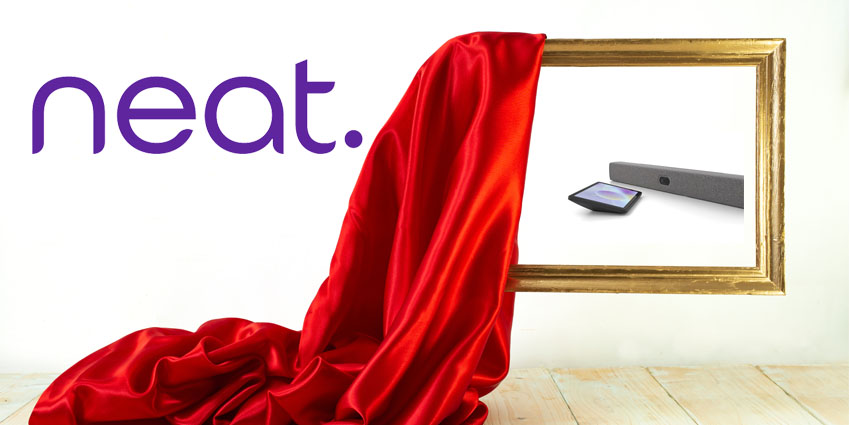Download the Endpoints Market Guide
It’s easy to get caught up focusing on software in today’s digitally-transforming communication landscape. However, even the most buzz-worthy trending concepts, like video collaboration tools, have requirements to consider when it comes to hardware.
In the unified communication and collaboration space, your endpoints encompass everything from IP phones to ATA adapters, video cameras, and even conference phones. While the demand for endpoints hasn’t changed, the kind of technology that businesses need to consider is evolving. In a world where 50% of UK employees are set to be working remotely by the end of the year, the old-fashioned desk phone might not be enough.
The good news? Today’s business leaders have the power to empower their employees with everything from all-in-one video room kits, to SIP phones equipped with in-built voice-enabled AI assistants. The future of the endpoint landscape has arrived.
Starting with the Basics: SIP Phones and Headsets
The deskphone isn’t dead; it’s just evolving.
Studies constantly prove that the hardware and deskphone market has remained relatively consistent over the last few years. However, we are seeing a growing demand for cloud-based solutions. Businesses want their employees to have the freedom to access the same routing strategies and numbers regardless of whether they’re using a desk phone, or logging into a UC app on a smartphone.
As the demand for flexible and remote working strategies continues, it’s likely that the design of the SIP phone will continue to change. We’ll see more wireless technology that can keep employees connected on the move, as well as cloud-based systems that come with access to endless state-of-the-art tools, like AI assistants and one-click connections to collaboration tools like Microsoft Teams.
UC headsets that allow employees to not only speak to their clients and customers, but also block out distraction with exceptional noise-cancelling will grow increasingly important. This is particularly true as more employees start working from ad-hoc office environments, cafes, and hot-desking sites.
Modern headsets from some of the leading endpoint vendors in the UC space now come with everything from dedicated collaboration tool connections, to presence features that help employees to side-step unnecessary distractions.
Video Endpoints and Meeting Rooms
The evolution of the communication landscape also means that endpoints aren’t just designed for voice communication anymore. Alongside wireless phones and noise-cancelling headsets, we also see the rise of easily accessible meeting rooms.
Huddle room spaces are growing more common among agile businesses that want to give their employees the option to launch a meeting at any moment. Leading video vendors are beginning to design their own custom huddle room kits, complete with everything a team might need to communicate and work together with their colleagues.
Huddle room kits come with access to things like HD-video with a wide-camera lens so that everyone can get the focus that they need in a meeting. There are conference phones that can easily capture voice and deliver it in HD quality to people across the globe. Some meeting rooms even come with access to collaboration tools like Microsoft Teams, so that employees can easily share files and documents in the midst of a meeting.
Disruptive new software combined with the latest meeting room endpoints can make everything from provisioning to productivity more effective. For instance, biometric components in a camera can establish room settings based on an employee’s unique profile the moment that they walk into a room. Artificial intelligence built into speakerphones can instantly record meetings with nothing but a simple voice command.
What’s more, as businesses continue to pursue more agile company cultures, room kits are becoming increasingly plug-and-play, meaning that there’s less need to take up important IT time whenever a meeting needs to be set up.
Investing in the Future of Endpoints
Buying the right endpoint technology can be a complicated process for today’s business leaders. For many companies, it will be time to start reducing their investment in big board-room technology. After all, only 55% of workstations in an office are occupied at any time in this flexible working landscape. This will make an easy-to-access phone, video, and collaboration tools incredibly important.
At the same time, as well as ensuring user adoption with accessible plug-and-play technology, business leaders will need to ensure that the right security is in place. This could mean finding ways to protect recorded conversations and meetings in the cloud or putting strategies like two-factor authentication and biometric security in place to limit access risks.
All the while, there are evolutions in the future of endpoints that need to be considered too. For instance, as well as virtual assistants and AI, the endpoints of the new decade could also begin to pave the way to things like virtual and augmented reality too. Already, we’re seeing companies like Cisco, and Microsoft experimenting with mixed reality content.
As 5G technology becomes more accessible, this VR/AR technology could even be embedded into smartphone applications for UC, allowing employees to explore new communication strategies wherever they are.
Planning for the Future of UC Endpoints
Going forward, employees investing in endpoint technology for their communication solutions will need to find something that fits perfectly with their hardware and software strategy. UC hardware will need to come with extensible applications that integrate seamlessly with the tools that businesses already use, such as Microsoft Teams, Zoom, or Slack. Other things to look for in UC apps include:
- Easy scalability, so you can add people or remove accounts when necessary
- End-to-end encryption and security
- Access to new features at the touch of a button
- Easy provisioning to improve adoption
- Training and support where necessary
Additionally, it will be crucial to ensure that you’re working with a vendor that can deliver the kind of futuristic technology that you may be interested in years to come. Ensuring that your endpoint vendor not only delivers the cutting edge solutions for compliance and security that you need, but the potential to unlock AI, VR, and other unique opportunities will be essential.
Remember, though having the right software for your UC strategy is essential, without the hardware it takes to capture video for your collaboration calls or deliver HD-quality audio, your business can’t thrive.







